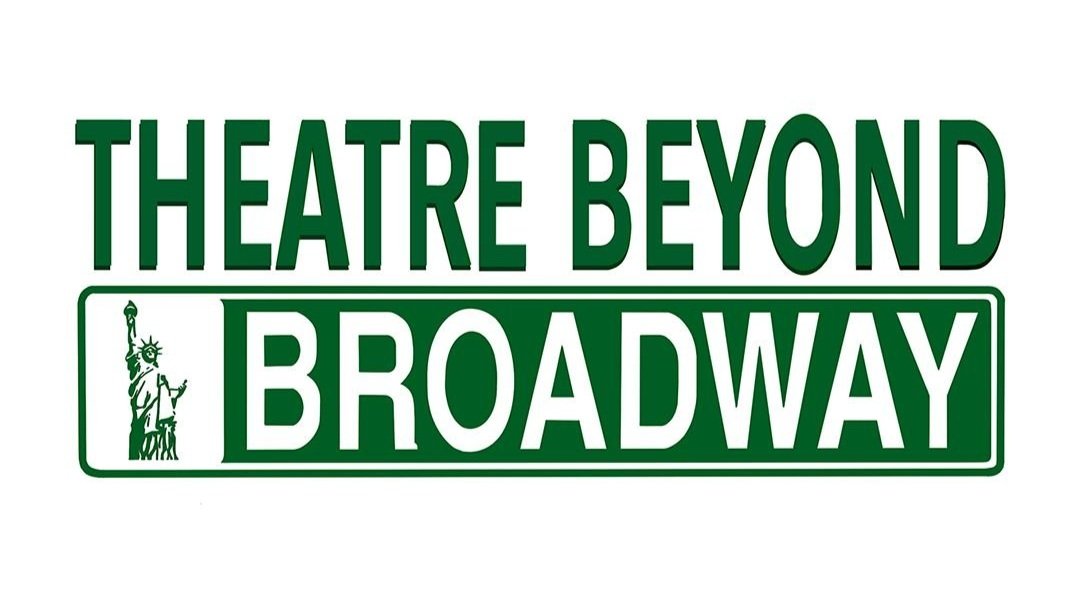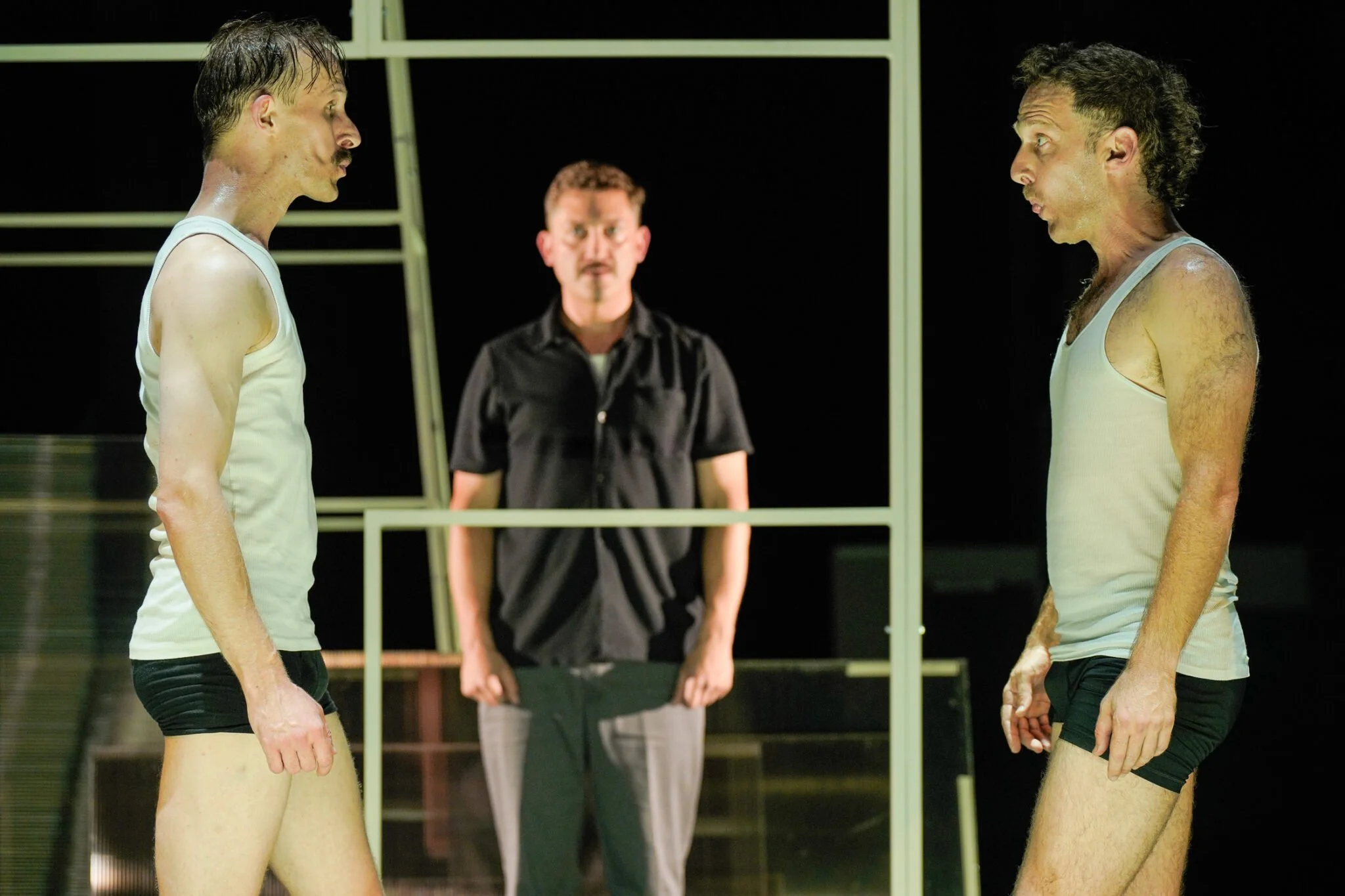The (Un) Double
Written and Directed by Anthony Nikolchev; Adapted from Fyodor Doestoevsky’s The Double; Co-Direction by Gema Galiana; Co-Creation by Lukasz Przytarski
LaMaMa | 66 East 4th Street, New York, New York 10003
October 9 - October 19, 2025
This past June, audiences at the storied 53rd International Theatre Festival of La Biennale di Venezia witnessed the world premiere of The Un(Double), a daring new creation from CalArts School of Theater faculty member Anthony Nikolchev. Nestled within the 2025 thematic tapestry Theater is Body – Body is Poetry, the work joined a rarefied international roster of avant-garde performance curated by none other than actor and provocateur Willem Dafoe, whose tenure as artistic director of La Biennale’s theater division has already promised to blur the boundaries between the physical, the poetic, and the political. This production, fortunately for New Yorkers, enjoyed a two-week run at La MaMa’s The Club this October.
Drawing its initial spark from Dostoevsky’s 1846 novella The Double, Nikolchev’s piece spirals outward in a fevered dialogue with history’s darker echoes. It entwines the existential paranoia of Dostoevsky’s protagonist with the chilling rhetoric of Radovan Karadžić—the Bosnian Serb politician convicted of genocide—and excerpts from the judicial record of the 2019 Christchurch massacre. The result is an unnerving palimpsest of guilt, doubling, and moral disintegration, interrogating how language and identity can fracture under the weight of atrocity. The Un(Double) stands as both a testament to the porous dialogue between American and European theatrical innovation and an unflinching meditation on the duplicities of the modern self.
Part Socratic inquisition, part psychiatric excavation, part dance of dissolution, The (Un)Double unfolds as a rigorously devised meditation on the instability of the self. Rooted in Fyodor Dostoevsky’s haunting novella, the piece transcends adaptation to become an embodied interrogation—an encounter where philosophy, movement, and narrative fracture converge. Through a kaleidoscope of “real-life doubles,” figures who mirror, distort, or devour their own identities, the work pries open the fault lines between the self and its idealized reflection, between authenticity and the perilous seduction of performance.
Nikolchev’s dramaturgy traces the shadow of Dostoevsky’s insight—that the human impulse to appear as someone other than oneself is not merely vanity, but a form of existential contagion. Within The (Un)Double, this contagion metastasizes into movement: the body stutters, splits, repeats, and rewrites itself before our eyes, asking whether the story we tell of who we are is ever truly ours to tell.
“How dangerous is the desire to become an image of oneself?” the piece asks, not rhetorically but viscerally. By magnifying the pathology of doubleness in today’s mediated, self-constructed world, The (Un)Double proposes a chilling hypothesis—that the fracture between self and self-image may no longer be a symptom, but a condition of modern life. Is there, the piece wonders, a point at which the split can be pinpointed, then redirected, or redeemed in any way —or have we long since become strangers to our own originals?
Jakov Petrovich Golyadkin—hapless, trembling, and half-submerged in delirium—awakens under dubious circumstances. Unsure whether he inhabits dream or waking life, he finds himself ensconced in a rattling carriage, his every nerve electrified by the oppressive gaze of his superior. That gaze—magnetic, annihilating—he rejects with pitiful insistence: “I have nothing to do with it… it’s not me, that’s all!” It is a cry of disavowal, an existential flinch. Moments later, he will meet his own double. Thus begins Dostoevsky’s The Double—a feverish descent into psychic fragmentation that provides the most significant of the primal sources for The (Un)Double).
But Nikolchev’s work, in its haunting expansiveness, refuses to confine itself to literary psychodrama. It reaches instead toward history’s most unbearable repetitions—the real doubles who have stalked the modern world in flesh and ideology. Among them stands Radovan Karadžić, the self-fashioned poet turned genocidaire, who after orchestrating atrocities as President of the Republika Srpska slipped into another skin entirely: Dragan Dabić, healer, mystic, alternative medicine guru. The piece traces the sinister absurdity of that transformation—the bureaucrat of death reborn as a shaman of wellness—and extends its inquiry to the shadows he cast on contemporary violence. In one of the work’s most chilling echoes, the Christchurch mosque murderer, Brenton Tarrant, invoked Karadžić’s name and mythology moments before enacting his own horror, his voice carrying the grotesque refrain of “Remove Kebab” into global infamy.
Such material resists representation; it scorches the stage that would attempt to hold it. Yet The (Un)Double) dares to answer through embodiment, through the radical vulnerability of shared presence. The work proposes that resistance—however fragile—may reside in human connection: in collaboration, in the conscious inhabiting one's own body, in the simple but profound act of feeling oneself exist.
We find ourselves in a sterile white office, the locus of bureaucratic violence, the stage of alienation. Menacing televisions flicker on every wall, an architecture of surveillance and repetition. Within this claustrophobic arena, a narrator oscillates between witness and participant as two bodies collide, mirror, and undo each other. The gaze—inescapable, devouring—dominates all. And yet, amid the clinical hum and the literary ghosts, a hand holds a book: a fragile reminder that within the text, as within the body, the possibility of self-recognition still flickers—however dimly, however doubly.
John Isaac Watters’s scenic design is a major achievement in the already confining limitations of La MaMa’s Club. The fast act of stripping it bare to its skeletal underpinnings in the third act, The Truth, happens stealthily by the three actors while the scene actually continues. John Zalewski’s sound design and original compositions combined with Teresa Nagel’s lighting design and Keith Skretch’s imposing video design serve to support Nikolchev’s enthralling concept for what is ultimately a disturbing yet captivating tale. Actors Lukasz Przytarski & Chris Polick switching into each other’s clothing in affirming their “double-ness,” along with Nikolchev, keep us forever in the moment, with the exception of a few choice mentions of what they tell us left the script or became included during the rehearsals playfully helping us to never lose consciousness of the fourth wall that we inhabit. If The Useless Room’s The (Un)Double is representative of the work on display in La Biennale di Venezia, please may we have some more?
Review by Tony Marinelli.
Published by Theatre Beyond Broadway on November 5, 2025. All rights reserved.

